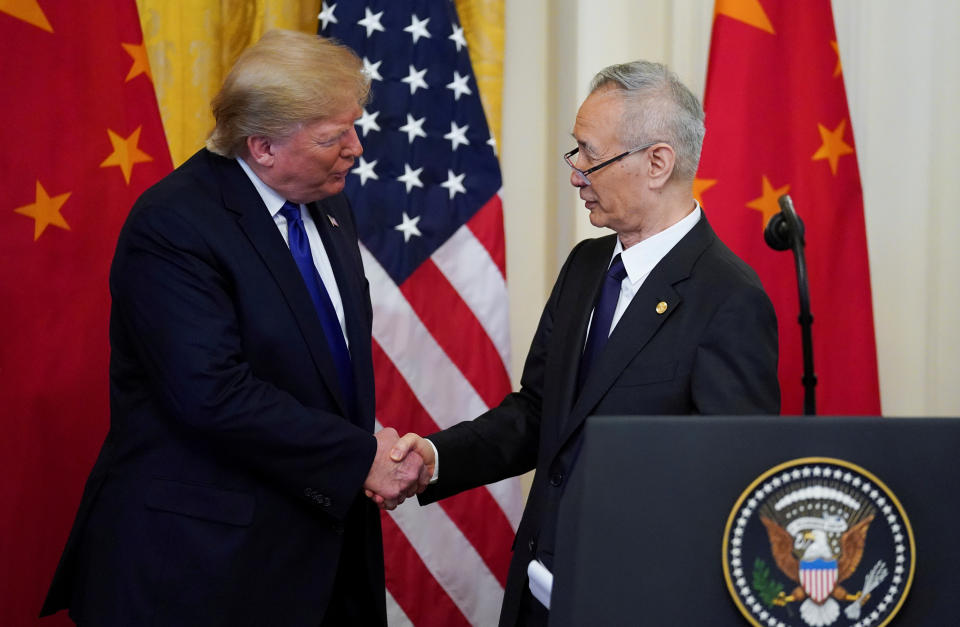China 'Phase 1' trade deal could 'start unraveling,' expert says
After almost two years of sparring, President Donald Trump and Chinese Vice Premier Liu He signed a Phase 1 trade deal on Wednesday, hitting the brakes on a trade war that has rattled global markets — at least for the moment.
While Trump touted the signing as a victory for the United States, some experts say this is only the beginning.
“Let’s not lose sight of the fact that there is still $380 billion worth of goods and services between the United States and China that are carrying tariffs,” John Quelch, University of Miami Herbert Business School Dean, told Yahoo Finance’s On the Move. “While this is a good day for the president, if the Chinese side does not fulfill with what it signed up for, then the deal could start unraveling.”
The 86-page agreement includes a pledge that Beijing will make at least $32.9 billion in additional agricultural purchases over the next two years, though the Trump administration says China will attempt to buy more. Over the same time period, China committed to buying an additional $77.8 billion in U.S. manufactured goods, $52.4 billion in U.S. oil and gas purchases, $37.9 billion in financials and other services, and increase protections for U.S. intellectual property.

“In the longer term the real devil is going to be on intellectual property,” Heritage Foundation’s Dean Cheng told Yahoo Finance. “If the Chinese wind up violating this agreement, we are actually going to wind up worse off because you are going to have some really ugly U.S., China sentiments.”
On intellectual property, the agreement states that the U.S. and China will “be able to operate openly and freely in the jurisdiction of the other Party without any force or pressure from the other Party to transfer their technology to persons of the other Party.” Any transfers of technology or licenses between people of each country must be voluntary. China will also create an action plan to “strengthen intellectual property protection aimed at promoting its high-quality growth” within 30 working days after the deal goes into effect.
U.S. Trade Representative Robert Lighthizer told reporters the IP provisions are “approaching a kind of gold standard of what an IP regime should look like.” He said the Phase 1 agreement “has real teeth.” Lighthizer added that the U.S. will know by spring if the deal is enforceable. "This agreement will work if China wants it to work,” he said. Lighthizer added that the U.S. aims to start talks on the second Phase 2 part of the deal before the presidential election in November.
“At this point, the president does not need a Phase 2 deal before November,” Quelch said. “This is clearly a first step, there is a long way to go in achieving everything the U.S. wishes to achieve.”
Valentina Caval is a producer with Yahoo Finance’s On the Move.
Read the latest financial and business news from Yahoo Finance
Follow Yahoo Finance on Twitter, Facebook, Instagram, Flipboard, SmartNews, LinkedIn, YouTube, and reddit.
